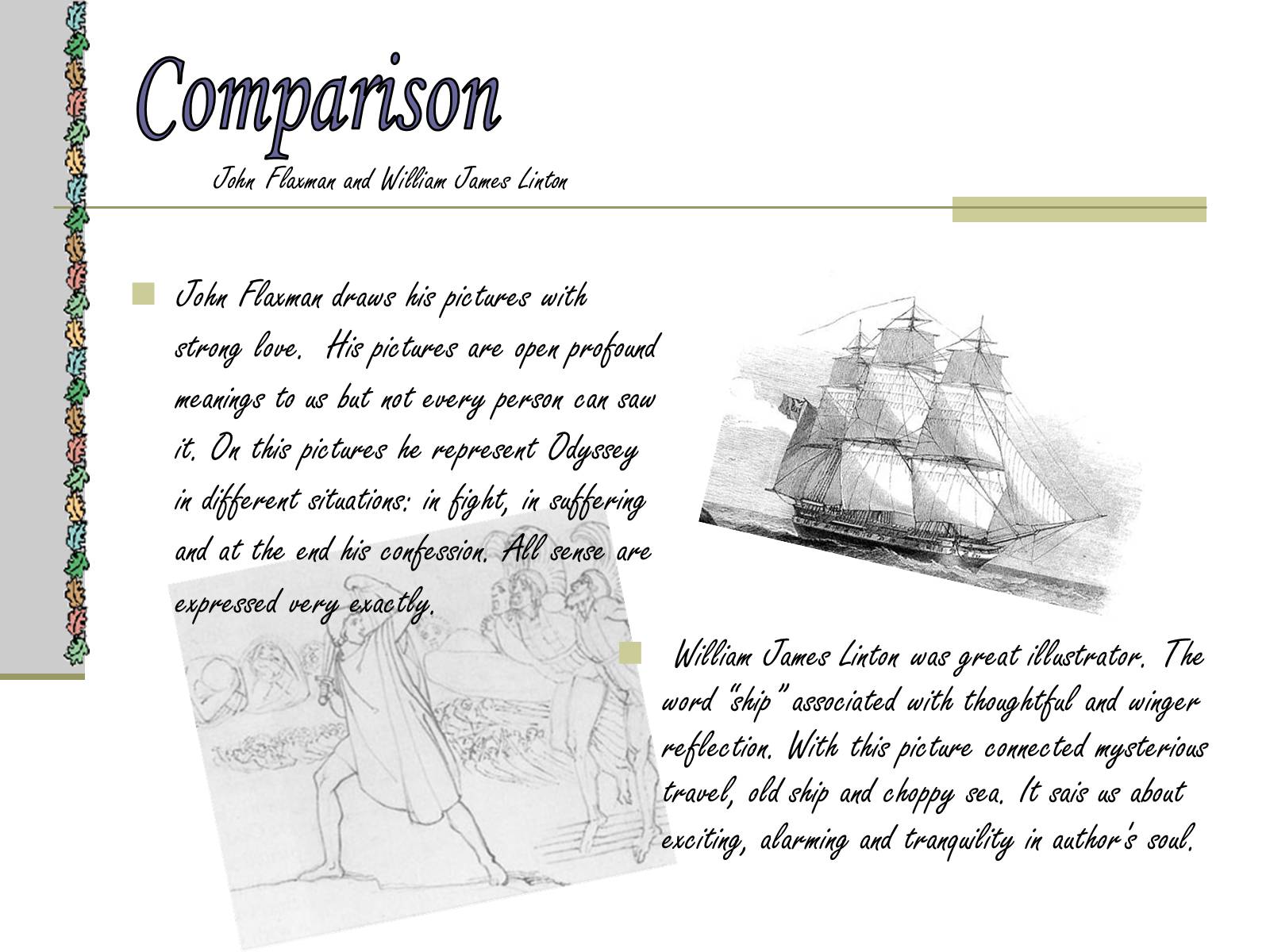- Головна
- Готові шкільні презентації
- Презентація на тему «English painters» (варіант 1)
Презентація на тему «English painters» (варіант 1)
230
Слайд #1
English painters
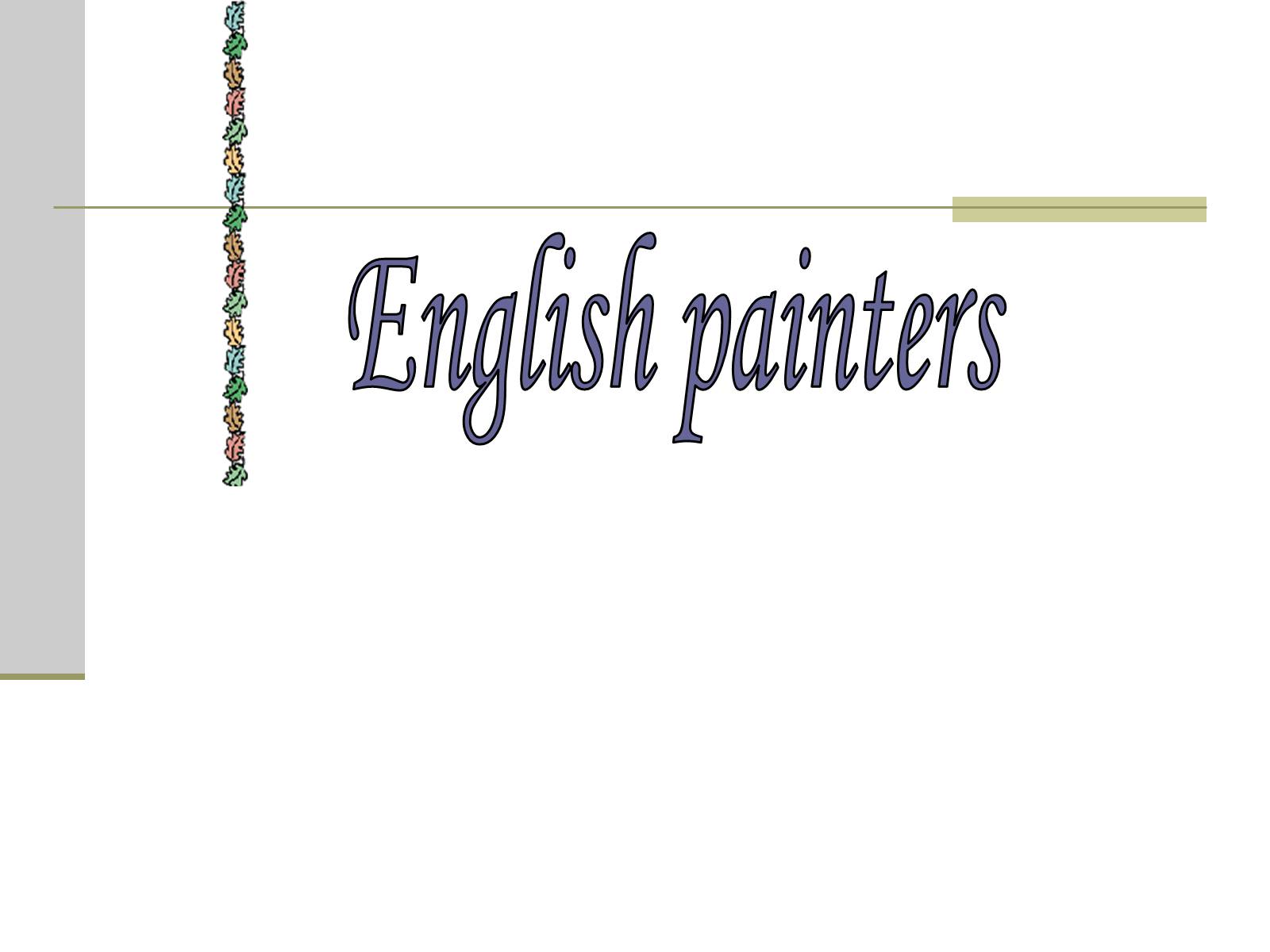
Слайд #2
We decided to show works of unknown English painters and well-known one; to tell some interesting facts about their lifes.
Our aim
Our aim
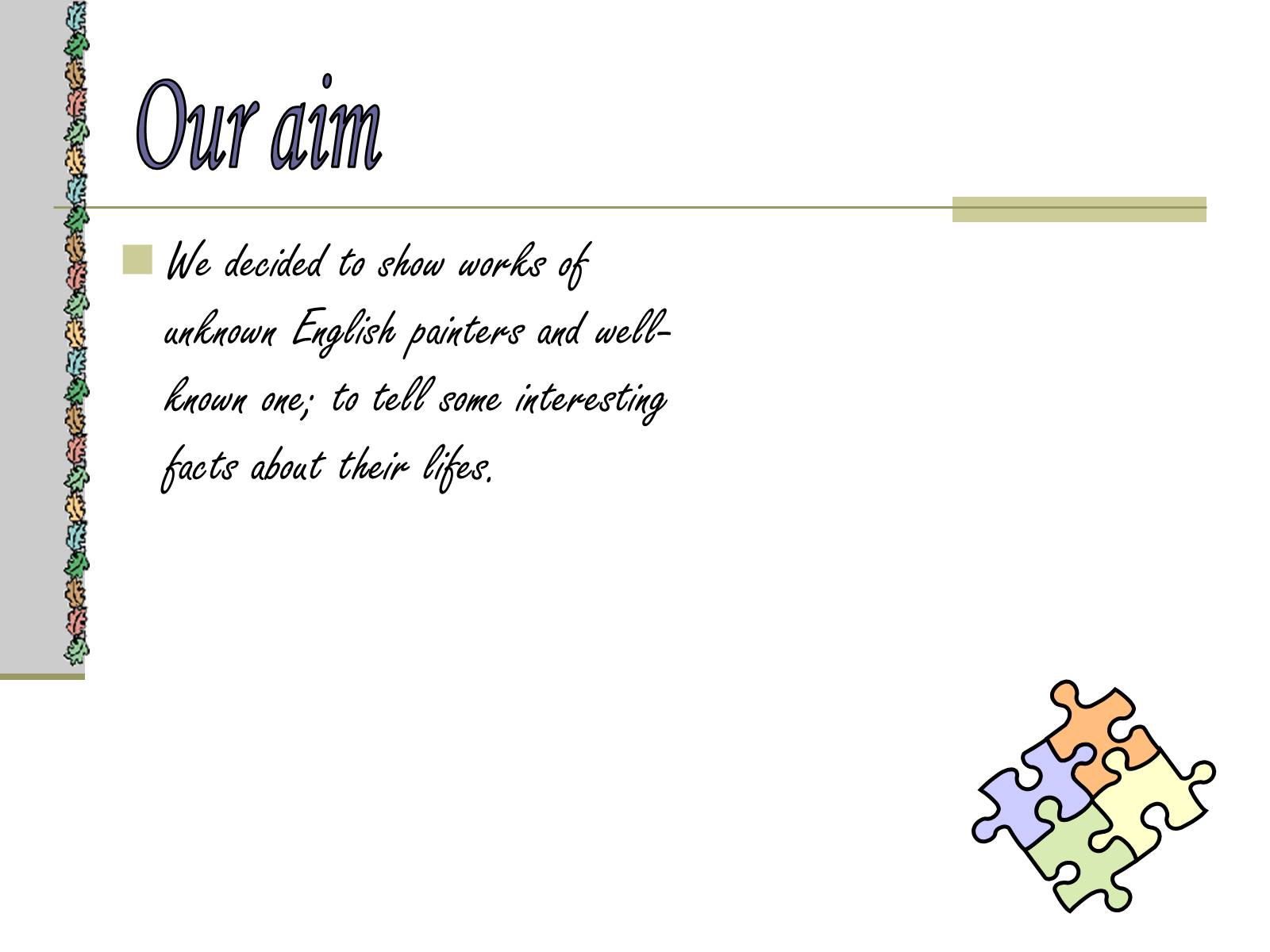
Слайд #3
Peter Lely studied painting in Haarlem. He becomes a master of the Guild of Saint Luke in Haarlem in 1637. He signs his works the surname "Lely" (also occasionally spelled Lilly).
After the English Restoration, Lely was appointed as Charles II Principal Painter in Ordinary in 1661, with a stipend of £200 per year, as Van Dyck had enjoyed in the previous Stuart reign
Peter Lely
After the English Restoration, Lely was appointed as Charles II Principal Painter in Ordinary in 1661, with a stipend of £200 per year, as Van Dyck had enjoyed in the previous Stuart reign
Peter Lely
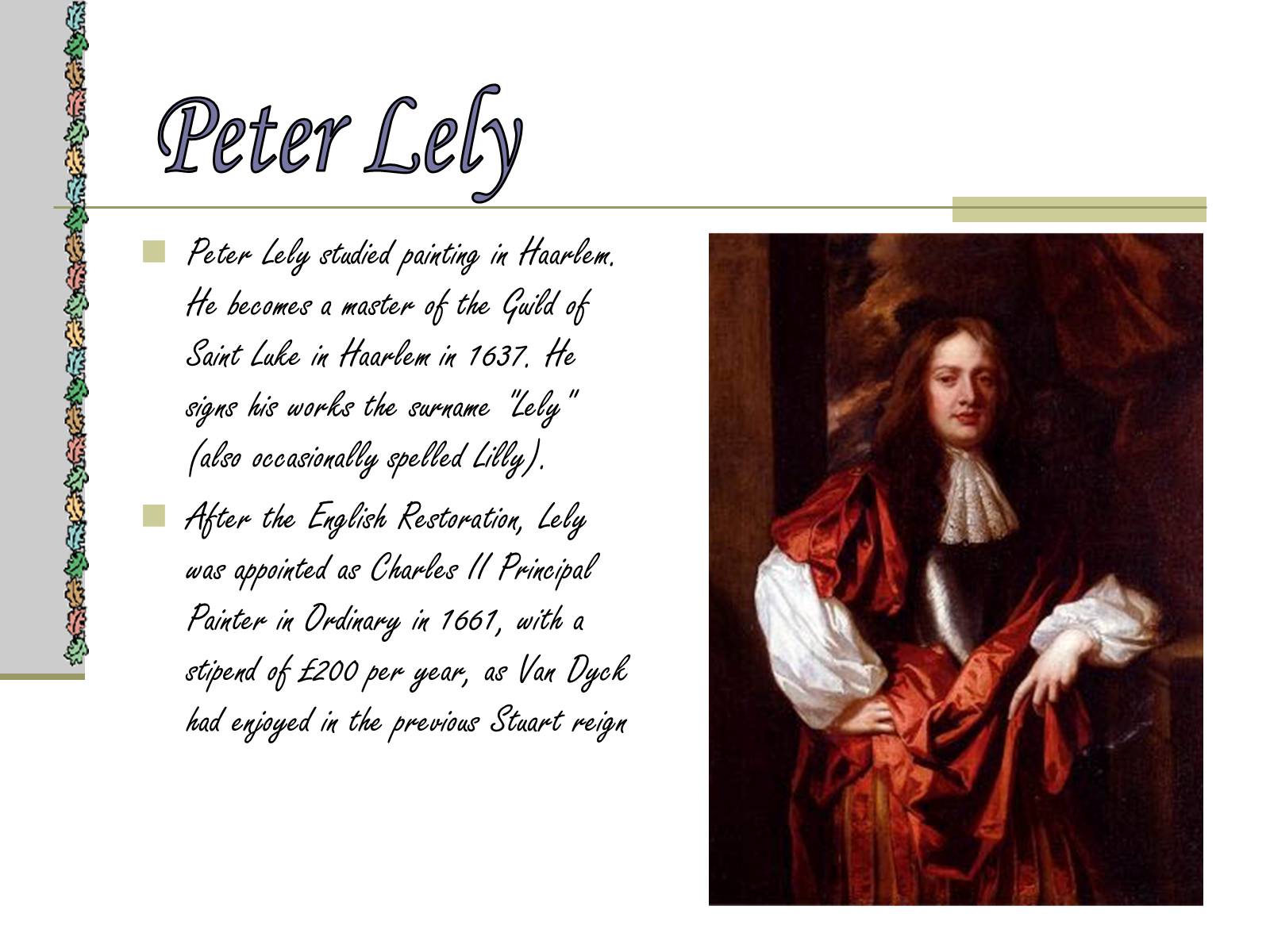
Слайд #4
As a result Lely is the first English painter who has left "an enormous mass of work“. Among his most famous paintings are a series of 10 portraits of ladies from the Royal court, known as the "Windsor Beauties"; a series of 12 of the admirals and captains who fought in the Second Anglo-Dutch War, known as the "Flagmen of Lowestoft", and his Susannah and the Elders at Burghley House. His most famous non-portrait work is probably Nymphs by a fountain in Dulwich Picture Gallery.
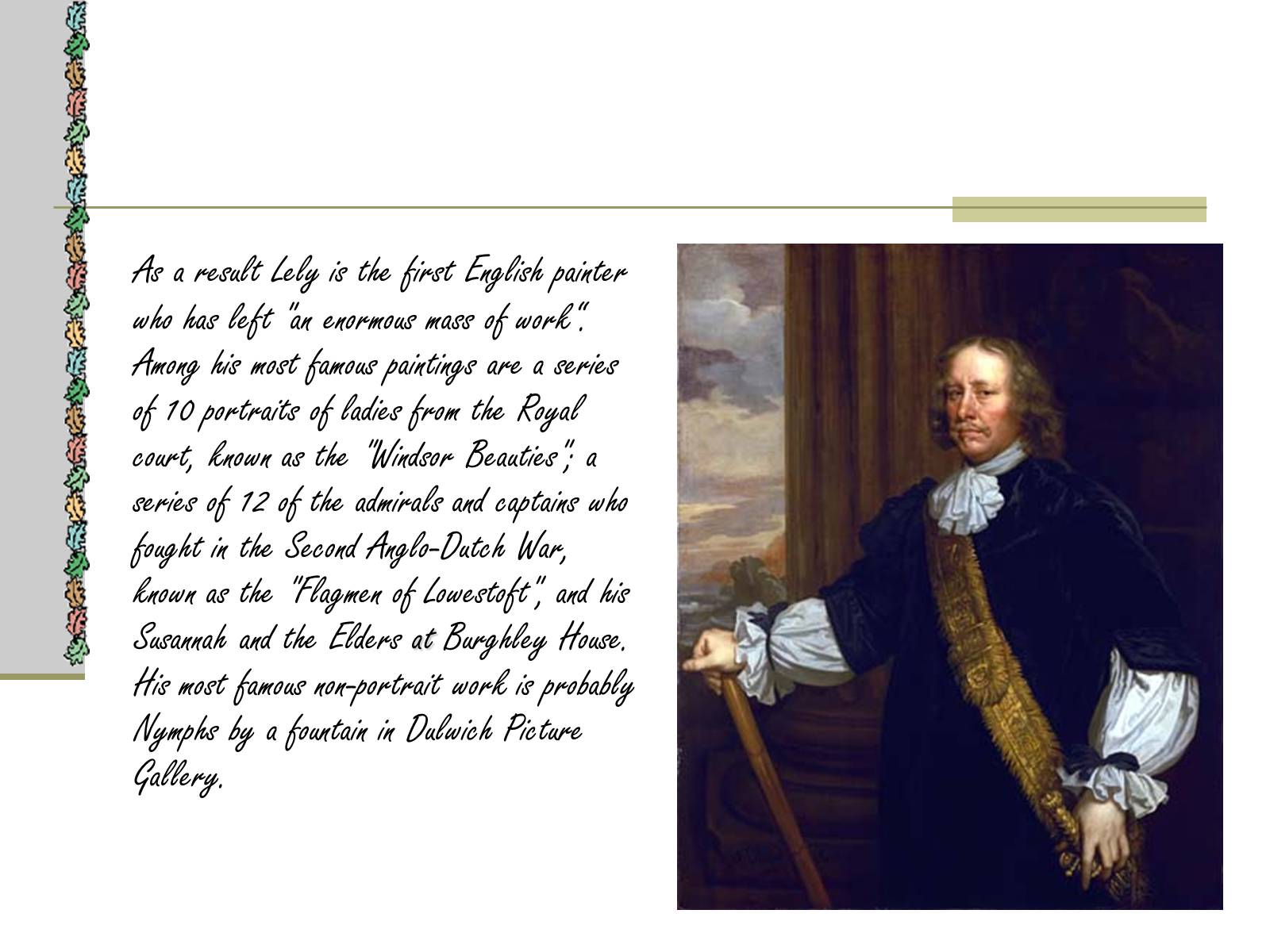
Слайд #5
West learned Wollaston's (John Wollaston, painter who immigrated from London) techniques for painting the shimmer of silk and satin, and also adopted some of "his mannerisms, the most prominent of which was to give all his subjects large almond-shaped eyes, which clients thought very chic".
Benjamin West
Benjamin West
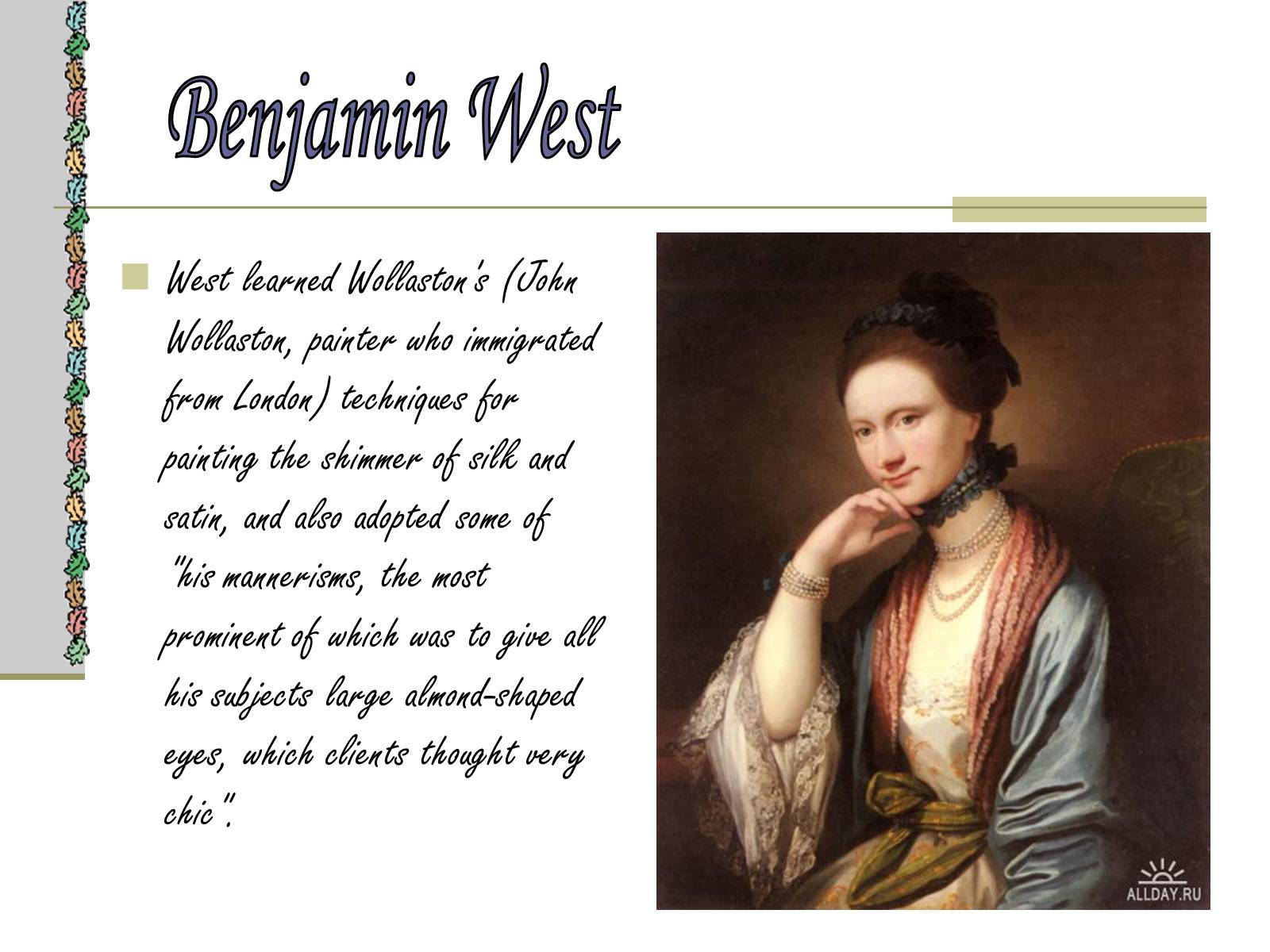
Слайд #6
In 1760, sponsored by Smith and William Allen, reputed to be the wealthiest man in Philadelphia, West traveled to Italy where he expanded his repertoire by copying the works of Italian painters such as Titian and Raphael.
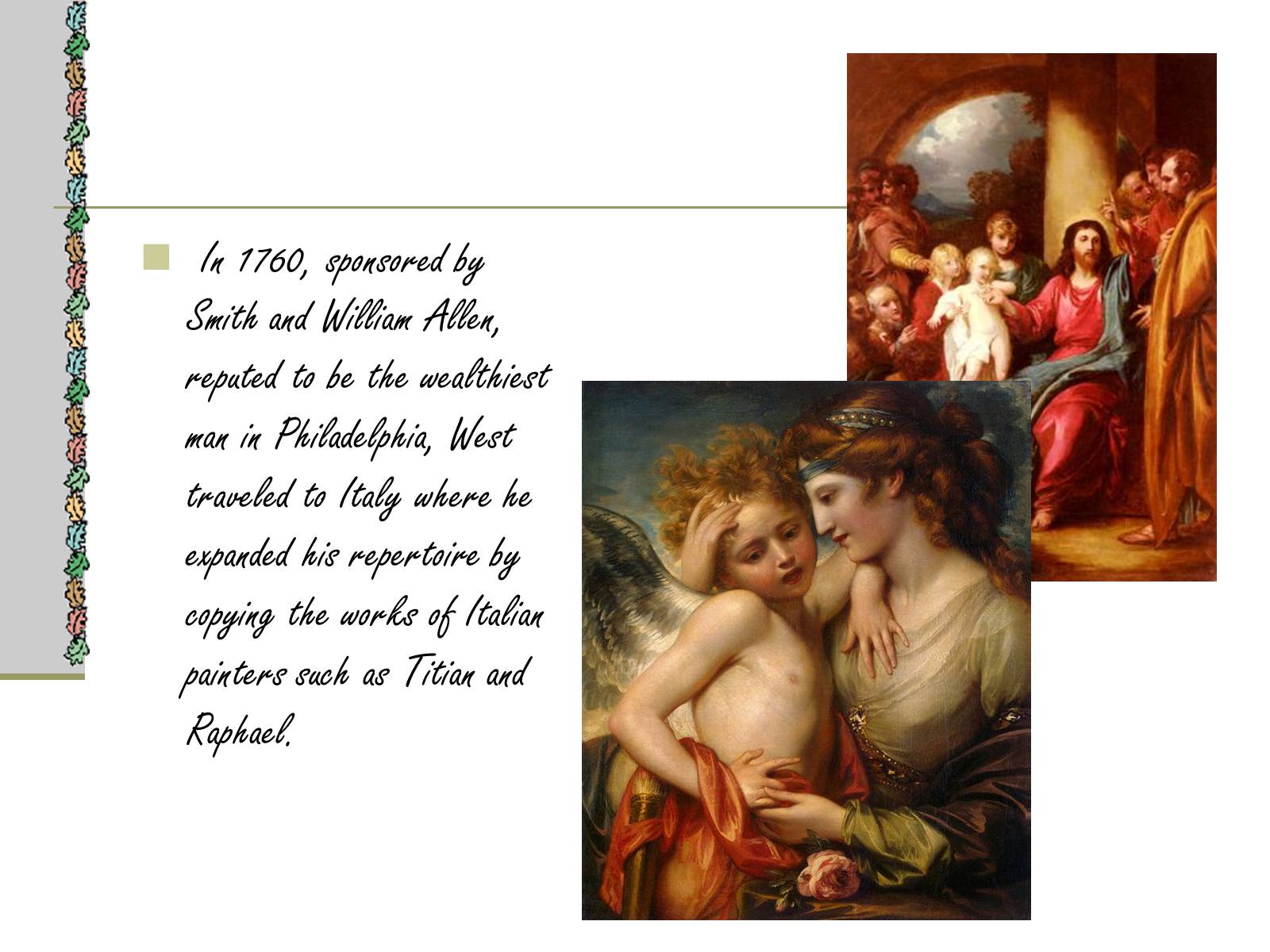
Слайд #7
Comparison
Peter Lely and Benjamin West
On Peter Lely's pictures presents rich colours and dyes. He owns exceptional style of painting fabric. Smart fabric tell us about great character but at the same time simple one, such as his cloth.
On the one hand, works of Benjamin West are similar with works of Peter Lely but it's never wasn't so. On the other hand, also he writes in unusual “alive” type. In his oil-paintihg are draw small shines of silk and are show all natural colours, harmonious in detail. West knows how use more smaller and “living” points than his colleagues.
Peter Lely and Benjamin West
On Peter Lely's pictures presents rich colours and dyes. He owns exceptional style of painting fabric. Smart fabric tell us about great character but at the same time simple one, such as his cloth.
On the one hand, works of Benjamin West are similar with works of Peter Lely but it's never wasn't so. On the other hand, also he writes in unusual “alive” type. In his oil-paintihg are draw small shines of silk and are show all natural colours, harmonious in detail. West knows how use more smaller and “living” points than his colleagues.
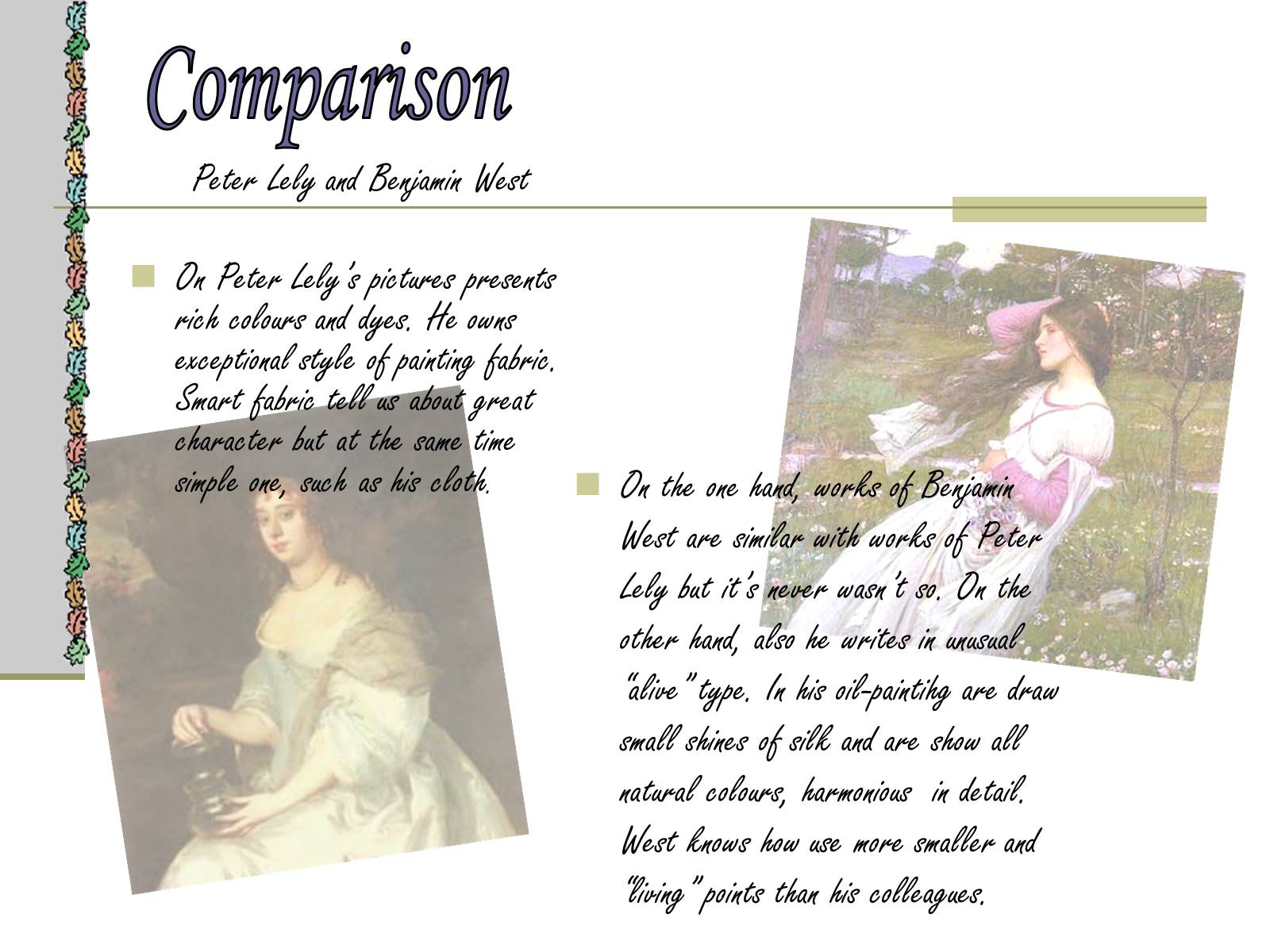
Слайд #8
What gained Flaxman, his general fame was not his work in sculpture proper, but those outline designs to the poets, in which he showed not only to what purpose he had made his own the principles of ancient design in vase paintings and bas reliefs, but also by what a natural affinity, better than all mere learning, he was bound to the ancients and belonged to them.
John Flaxman
Self-portrait
John Flaxman
Self-portrait
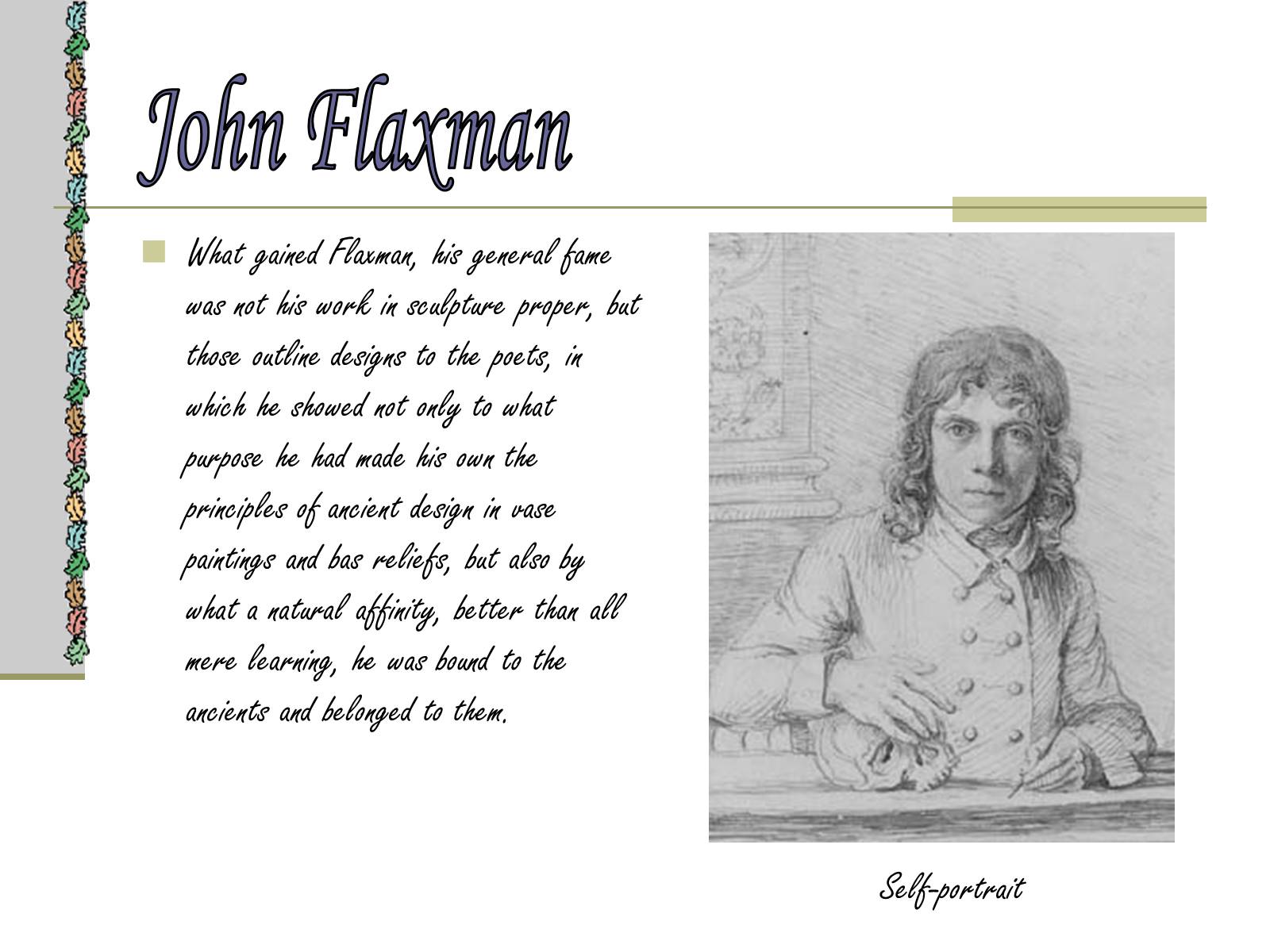
Слайд #9
The designs for the Iliad and Odyssey were commissioned by Mrs. Hare Naylor; those for Dante by Hope; those for Aeschylus by Lady Spencer; they were all engraved by Piroli, not without considerable loss of the finer and more sensitive qualities of Flaxman's own lines.
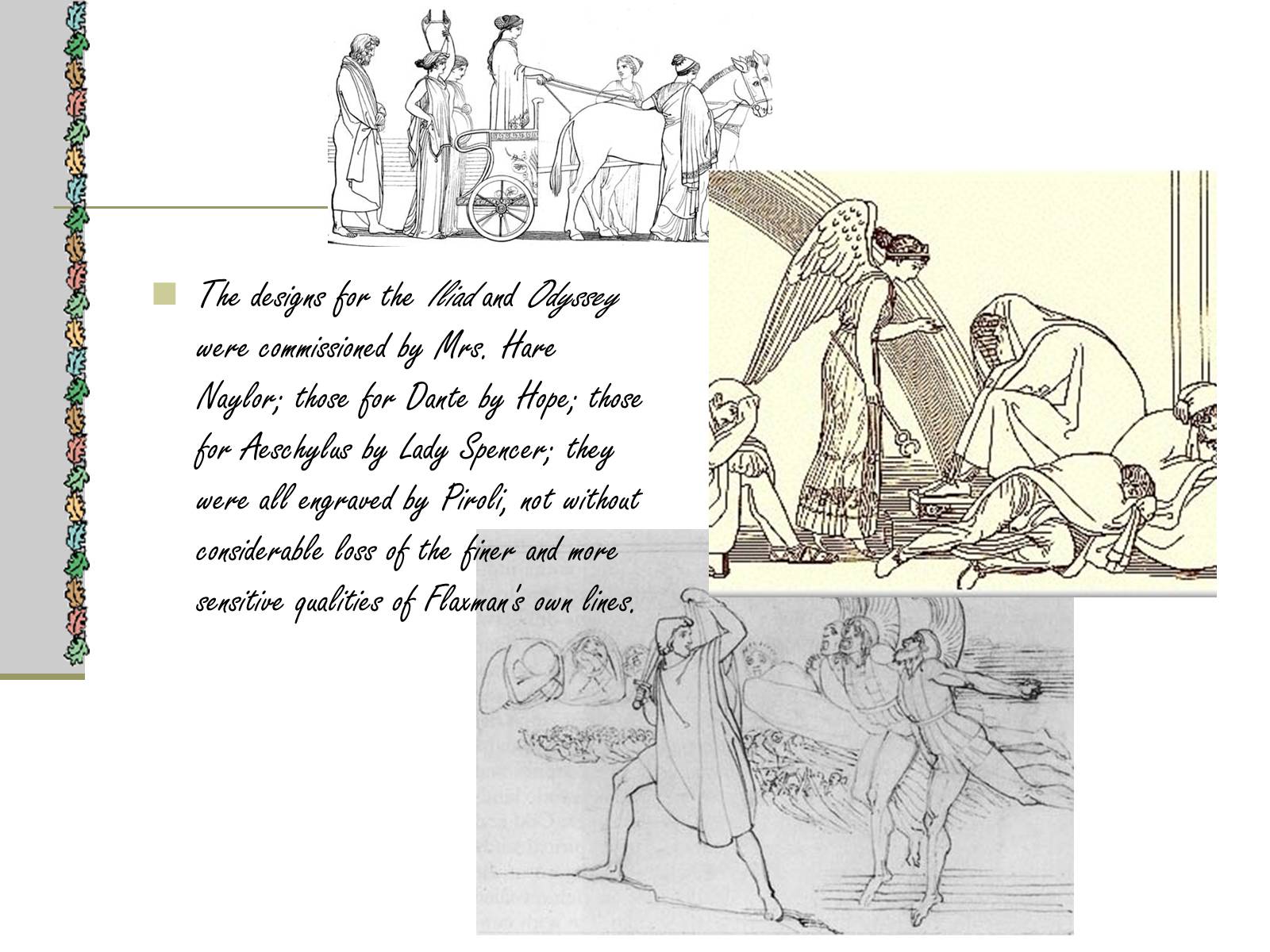
Слайд #10
Flaxman's sculptures
John Flaxman 'Cephalous and Aurora.
Nelson
John Flaxman 'Cephalous and Aurora.
Nelson
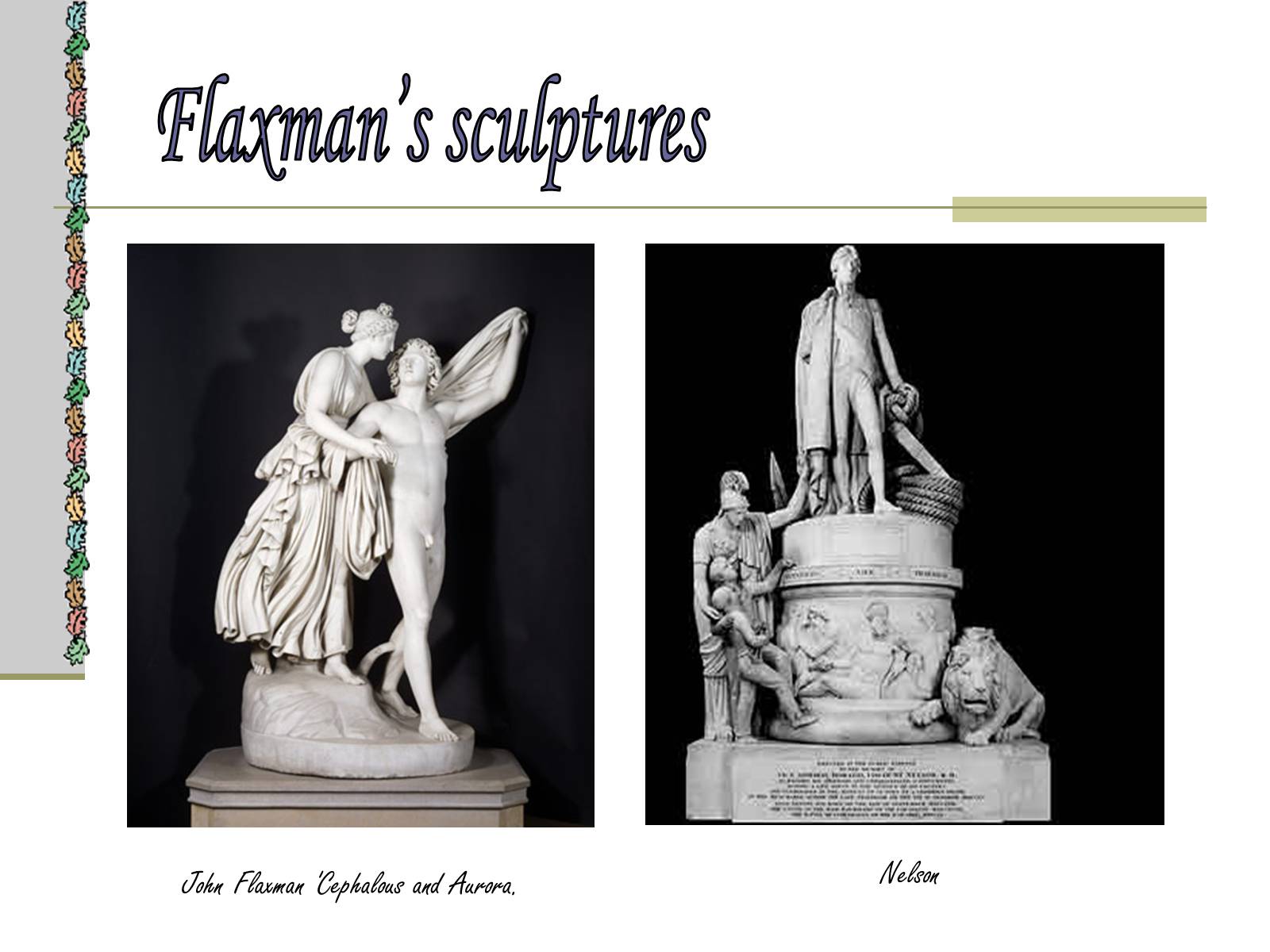
Слайд #11
In his sixteenth year Linton was apprenticed to the wood-engraver George Wilmot Bonner. His earliest known work is to be found in Martin and Westall's Pictorial Illustrations of the Bible (1833). He rapidly rose to a place amongst the foremost wood-engravers of the time. After working as a journeyman engraver with two or three firms, losing his money over a cheap political library called the "National," and writing a life of Thomas Paine, he went into partnership in 1842 with John Orrin Smith.
William James Linton
William James Linton
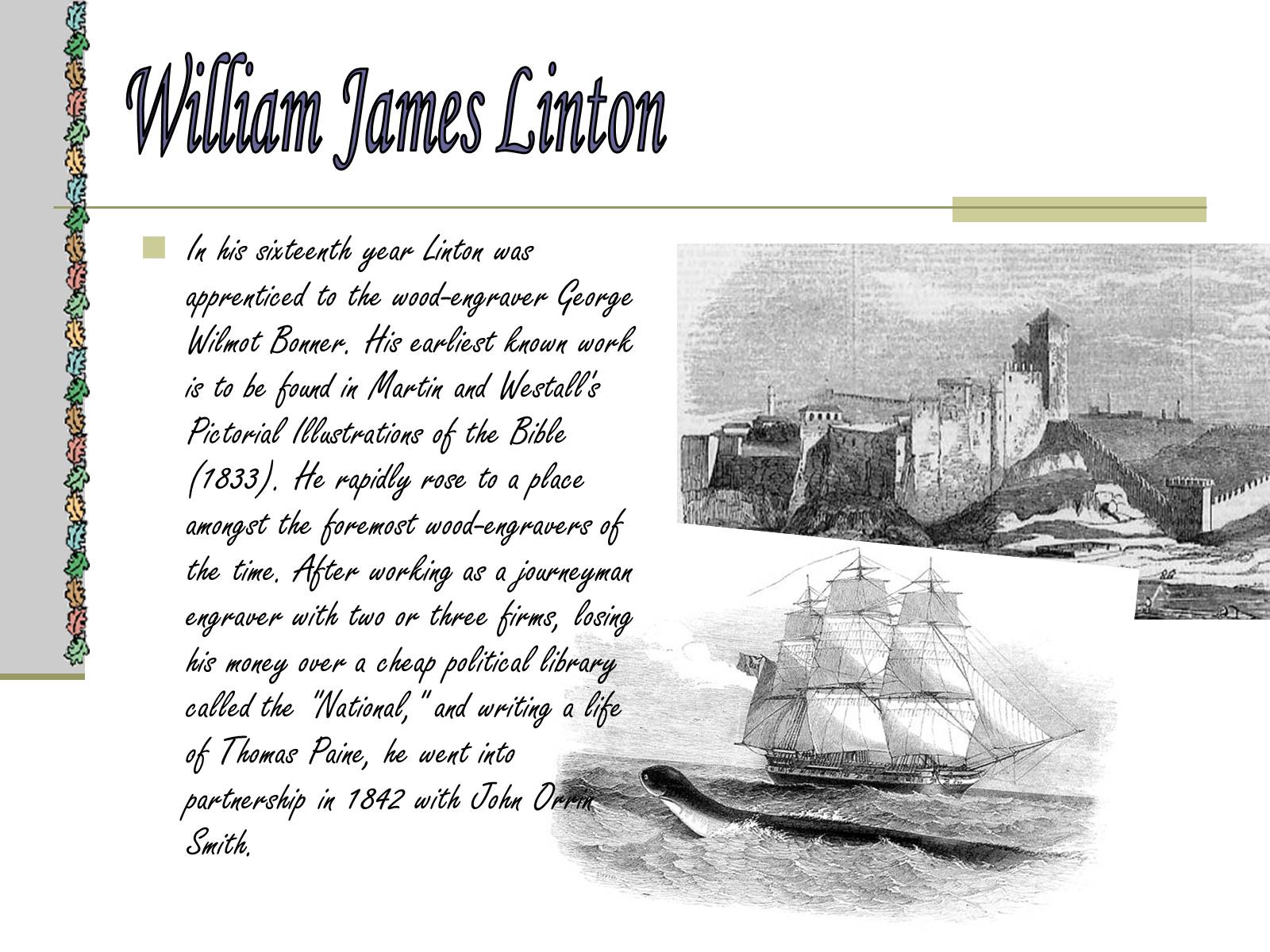
Слайд #12
The firm was immediately employed on the Illustrated London News, just then projected. The following year Orrin Smith died, and Linton, who had married a sister of Thomas Wade, editor of Bell's Weekly Messenger, found himself in sole charge of a business upon which two families were dependent.
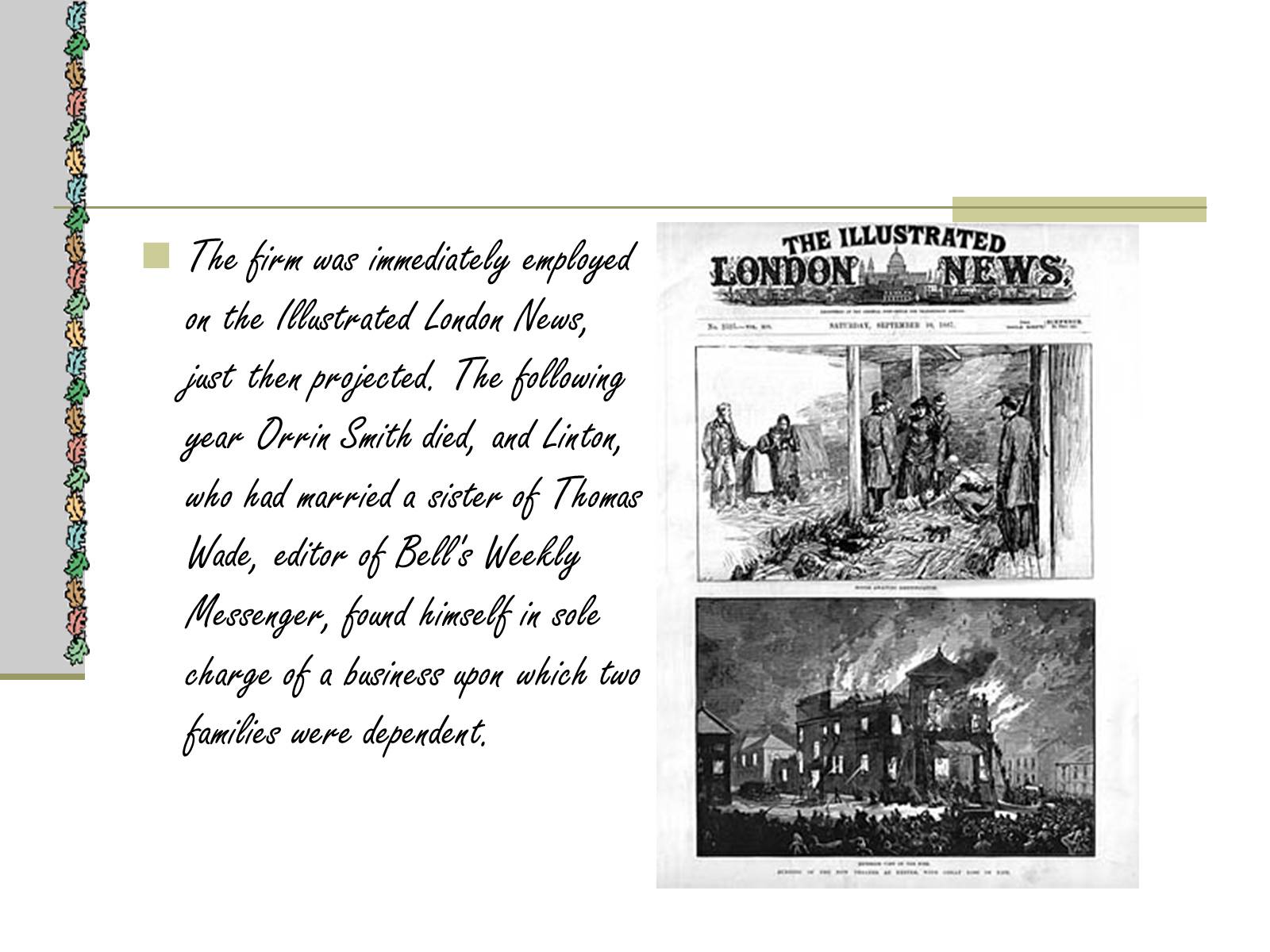
Слайд #13
Comparison
John Flaxman and William James Linton
John Flaxman draws his pictures with strong love. His pictures are open profound meanings to us but not every person can saw it. On this pictures he represent Odyssey in different situations: in fight, in suffering and at the end his confession. All sense are expressed very exactly.
William James Linton was great illustrator. The word “ship” associated with thoughtful and winger reflection. With this picture connected mysterious travel, old ship and choppy sea. It sais us about exciting, alarming and tranquility in author's soul.
John Flaxman and William James Linton
John Flaxman draws his pictures with strong love. His pictures are open profound meanings to us but not every person can saw it. On this pictures he represent Odyssey in different situations: in fight, in suffering and at the end his confession. All sense are expressed very exactly.
William James Linton was great illustrator. The word “ship” associated with thoughtful and winger reflection. With this picture connected mysterious travel, old ship and choppy sea. It sais us about exciting, alarming and tranquility in author's soul.
